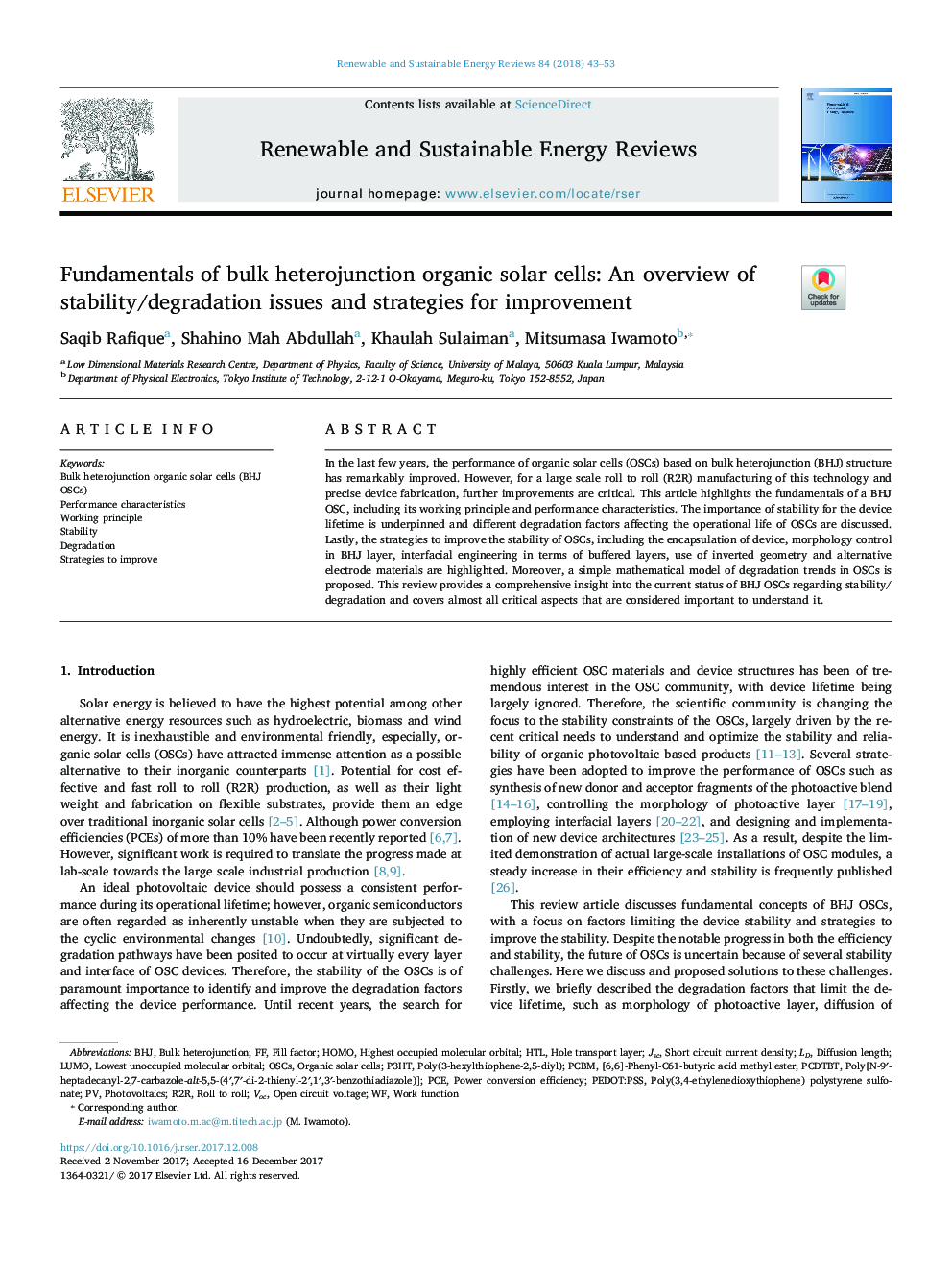| Article ID | Journal | Published Year | Pages | File Type |
|---|---|---|---|---|
| 8111608 | Renewable and Sustainable Energy Reviews | 2018 | 11 Pages |
Abstract
In the last few years, the performance of organic solar cells (OSCs) based on bulk heterojunction (BHJ) structure has remarkably improved. However, for a large scale roll to roll (R2R) manufacturing of this technology and precise device fabrication, further improvements are critical. This article highlights the fundamentals of a BHJ OSC, including its working principle and performance characteristics. The importance of stability for the device lifetime is underpinned and different degradation factors affecting the operational life of OSCs are discussed. Lastly, the strategies to improve the stability of OSCs, including the encapsulation of device, morphology control in BHJ layer, interfacial engineering in terms of buffered layers, use of inverted geometry and alternative electrode materials are highlighted. Moreover, a simple mathematical model of degradation trends in OSCs is proposed. This review provides a comprehensive insight into the current status of BHJ OSCs regarding stability/degradation and covers almost all critical aspects that are considered important to understand it.
Keywords
PCEpoly(3,4-ethylenedioxythiophene) polystyrene sulfonateJsc[6,6]-Phenyl-C61-butyric acid methyl esterR2RPCBMPCDTBTHTLBHJP3HTVOCOSCsPEDOT:PSSHomohighest occupied molecular orbitalShort circuit current densityDegradationStabilityPower conversion efficiencyRoll to rollorganic solar cellsDiffusion lengthFill factorPhotovoltaicsHole transport layerLUMOBulk heterojunctionopen circuit voltagePerformance characteristicsPoly(3-hexylthiophene-2,5-diyl)Work functionLowest Unoccupied Molecular Orbital
Related Topics
Physical Sciences and Engineering
Energy
Renewable Energy, Sustainability and the Environment
Authors
Saqib Rafique, Shahino Mah Abdullah, Khaulah Sulaiman, Mitsumasa Iwamoto,
